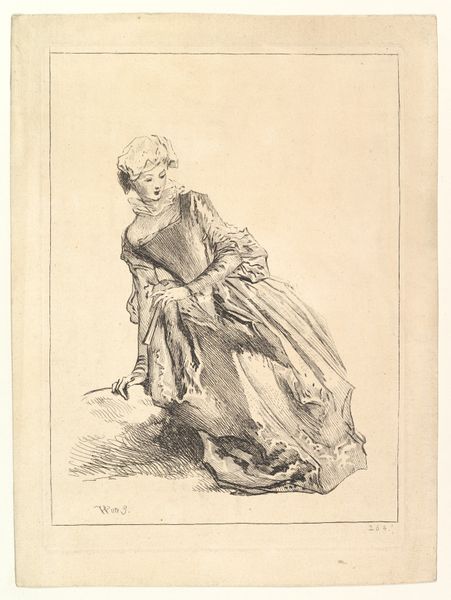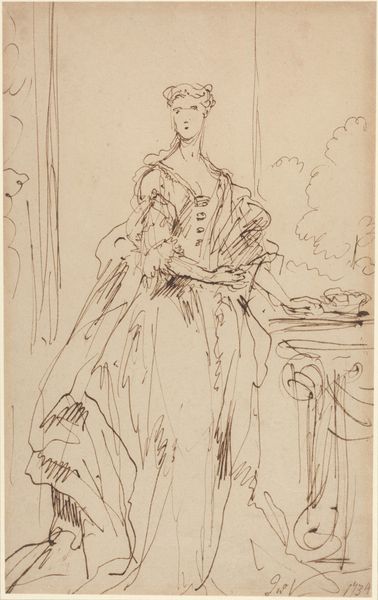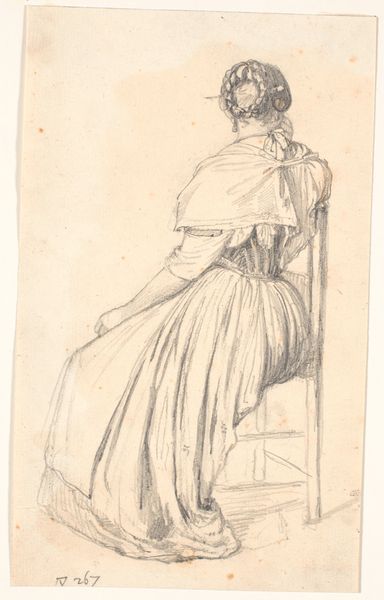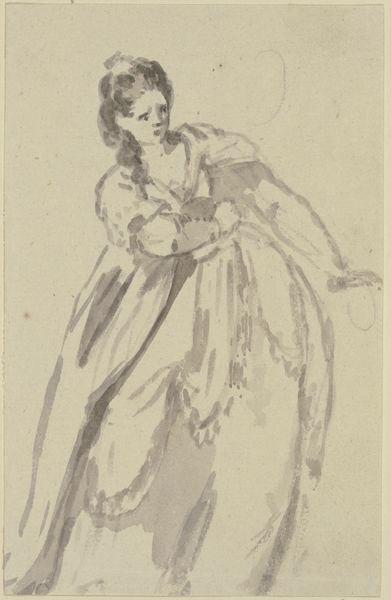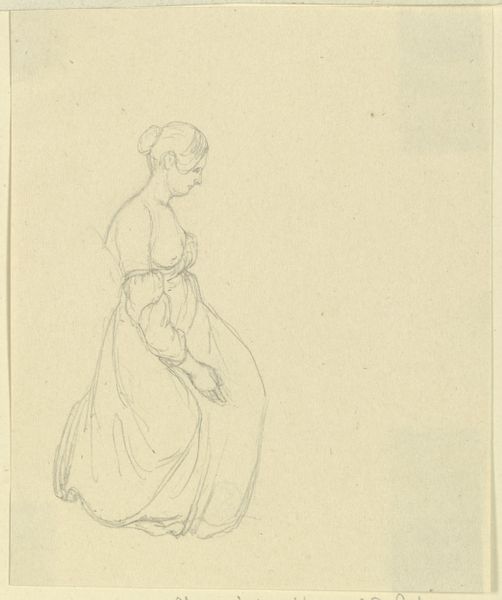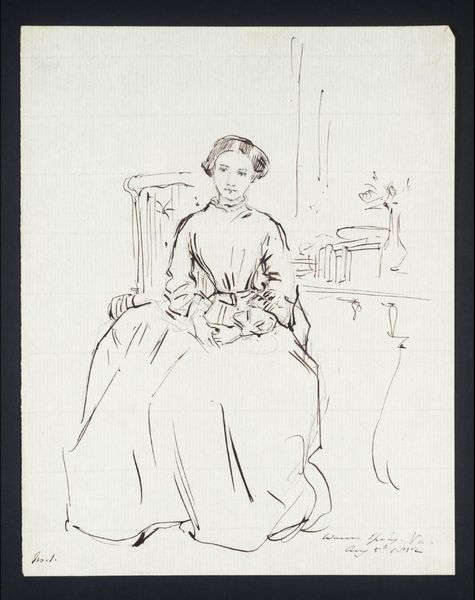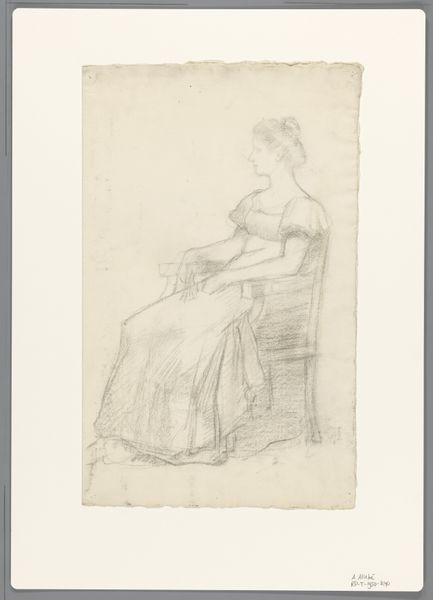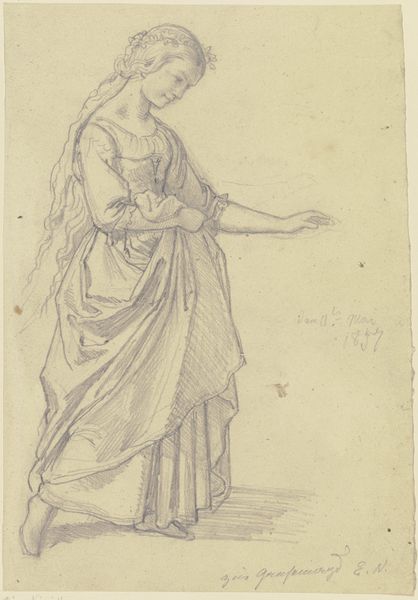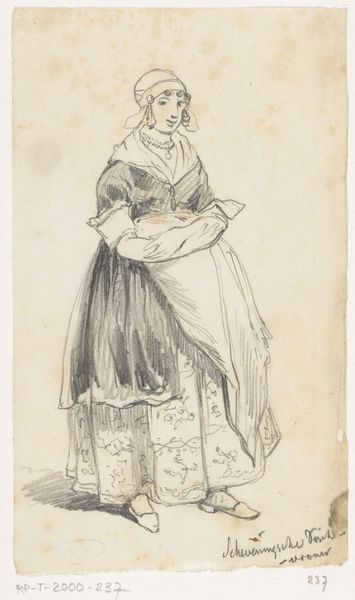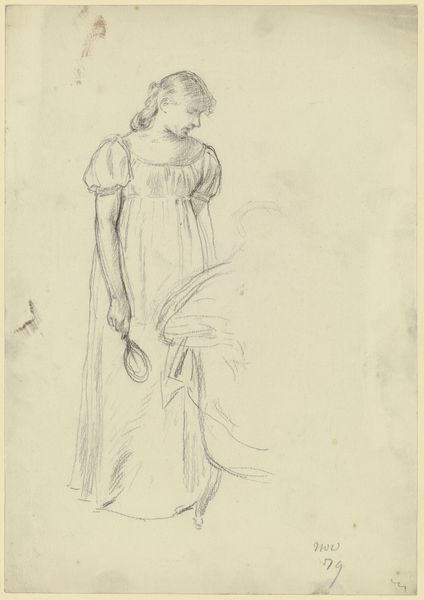
drawing
#
portrait
#
drawing
#
imaginative character sketch
#
toned paper
#
light pencil work
#
pencil sketch
#
figuration
#
personal sketchbook
#
ink drawing experimentation
#
romanticism
#
sketchbook drawing
#
portrait drawing
#
pencil work
#
sketchbook art
Dimensions: 231 mm (height) x 175 mm (width) (bladmaal)
Curator: This delicate pencil sketch is by Wilhelm Marstrand and is titled "Siddende kvinde i balkjole" or "Seated Woman in a Ball Gown," dating from sometime between 1810 and 1873. Editor: My first impression is one of melancholy. She seems rather constrained in that voluminous gown, almost overwhelmed by it. Curator: It's interesting you say that. Considering societal expectations placed upon women, particularly regarding dress and comportment during the 19th century, the restrictive clothing could indeed represent confinement and the suppression of individual agency. Editor: The artist has really captured that feeling, hasn't he? The very slight drooping of her shoulders, the hands clasped almost nervously in her lap… it’s a picture of contained emotion. Note also the flower in her hair: it may have meaning related to the symbolism of feminine adornment and societal expectations of beauty during that time. Curator: Yes, it all coalesces around her representation, not just as a person, but as an idea, reflective of a particular social position. A portrait isn't simply a likeness; it’s a carefully constructed representation of status, aspiration, and belonging. Considering Marstrand's other work, one could even examine it as a critical commentary. Editor: I find that compelling, particularly when considering the minimal setting. All the focus is on her figure, allowing us to interpret her almost as a symbol of her era's complex norms for women. And thinking further on symbols and memory… Curator: Exactly! It goes far beyond the aesthetic appeal. We need to consider how historical power dynamics shaped how we continue seeing these portrayals even today, and how this contributes to, or contests, persistent patriarchal structures within contemporary society. Editor: Absolutely. Images persist and take on additional layers of meaning as they travel across time and place. Curator: It gives us a rich picture when looking at that period. Editor: Definitely! Thank you.
Comments
No comments
Be the first to comment and join the conversation on the ultimate creative platform.


